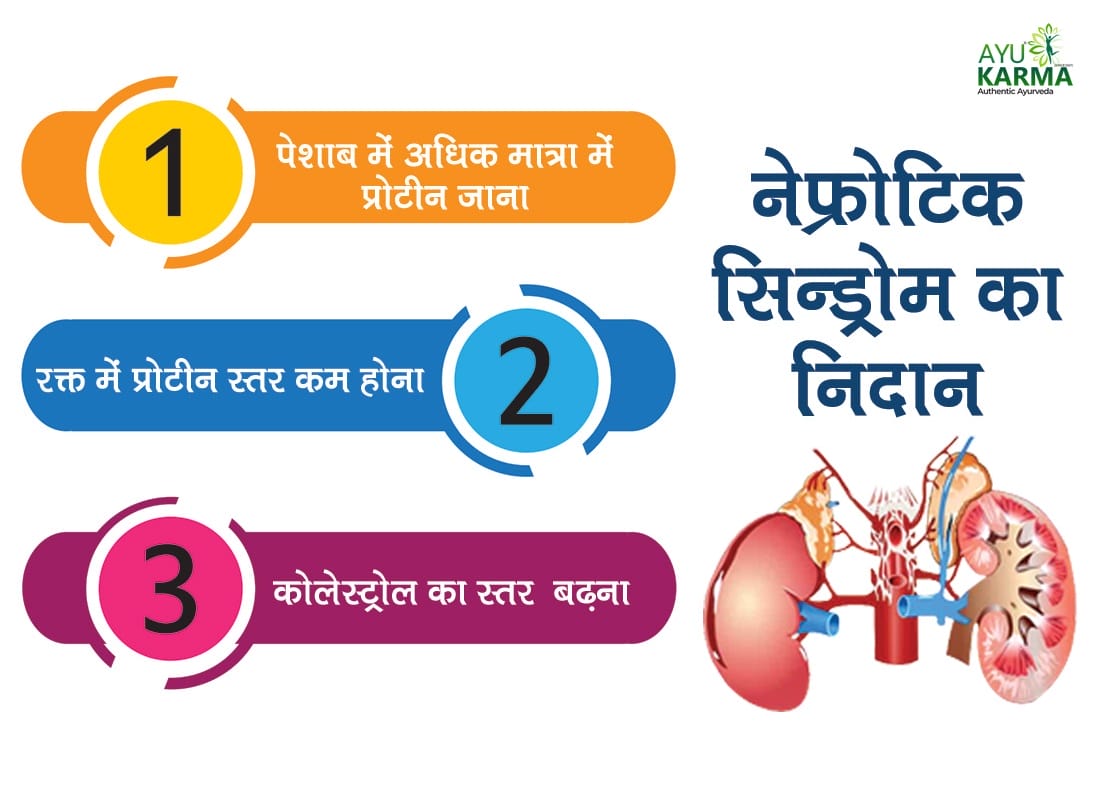Nephrotic syndrome is a kidney concern that causes your body to pass excessive protein in the urine. The syndrome usually happens after damage to the cluster of small blood vessels in the kidney that is responsible to filter waste and excess water from the blood.
As a result, the kidney releases protein (proteinuria) in excess of the urine. The condition can lead to swelling, specifically in the ankles and feet and increases other health conditions. Overcome the disease with Nephrotic syndrome ayurvedic medicine. Since ayurveda is an ancient practice that is still being practised by renowned ayurveda practitioners to cure various kidney diseases.
However, the duration to cure diseases like nephrotic syndrome will take time, but the results are assured without causing any side effects. The need is to approach the best ayurveda hospital for the treatment. Read the blog carefully, as this will help you to gain valuable insight.
Signs and Symptoms of Nephrotic Syndrome
A nephrotic syndrome is a group of symptoms that shows the kidney isn’t working properly. If your kidneys aren’t working, you experience the following symptoms –
- Puffiness around the eyes and swelling in your ankles and feet.
- Frothy urine results from excess protein in the urine.
- Put on weight due to fluid control.
- Tiredness
- Craving

Possible causes that trigger the disease
Many health conditions and diseases can bring glomerular damage and can cause nephrotic syndrome, involving –
- Diabetic Kidney disease – Diabetes can cause Kidney damage that impacts the glomeruli.
- Minimal change disease – The common cause behind the syndrome in children. The minimal change in disease causes abnormal kidney function, but when the kidney tissue is inspected under a microscope. It seems normal. This led to an abnormal function that usually can’t be determined.
- Focal segmental glomerulosclerosis – The condition occurs from another kidney disease, a genetic defect or several medications featured by scarring of some of the glomeruli.
- Membranous nephropathy – The kidney disorder appears after the thickening of membranes within the glomeruli. Deposits in the immune system cause the thickening of deposits. The disease can be linked with other concerns like lupus, hepatitis B, cancer, and malaria or can happen due to unspecified reasons.
- Systemic lupus erythematosus – Chronic inflammatory disease can cause serious kidney damage.
- Amyloidosis – The disorder happens when amyloid proteins gather in the organs. It form-up frequently and damages the kidney filtering system.
Risk factors
The factors that make you more likely at risk of getting nephrotic syndrome are as follows –
- Medical conditions damage Kidneys – Several diseases that increase the probability of developing nephrotic syndrome involve diabetes, lupus, amyloidosis, and other Kidney diseases.
- Medications – Several drugs and medications can trigger nephrotic syndrome involving nonsteroidal anti-inflammatory drugs that are used to fight infection.
- Infections – If an individual caught up with an increased risk of nephrotic syndrome, including HIV, malaria, hepatitis B, and Hepatitis C.

Ayurvedic treatment for Nephrotic syndrome
Ayurvedic herbs have no side effects for nephrotic syndrome. It directly or indirectly meets the following purposes –
- Fight autoimmune disease.
- Lowers inflammation.
- Aid giving new cells.
- Improves Kidney functioning.
Nephrotic Syndrome treatment with Ayurvedic Herbs
Some common Nephrotic syndrome for herbs and medicine are as follows –
- Punarnava (boerhavia diffusa) – This is an effective herb and Ayurvedic Medicine For Nephrotic Syndrome commonly used to treat renal failure, glomerulonephritis and nephrotic syndrome ayurvedic treatment. As a safe medicine, it is good for edema, ascites, and renal failure. It is also helpful in treating renal inflammatory disease effectively owing to its anti-inflammatory properties.
- Gokshura (Tribulus Terrestris) – The kidney, urinary bladder, ureters, and so on are strengthened due to increasing blood circulation by the genito-urinary tonic. Gokhru heals the damaged tissue caused by renal failure. It also acts as a diuretic and eliminates Kidney stones.
- Rakta Chandana – It acts as a diuretic and an anti-infective medicine. Apart from urinary tract cooling, it alkalizes urine as well.
- Palaash (Butea monosperma) – It acts as an alkalizer of urine, and also the urinary system infection is treated by this.
- Kasani (Cichorium intybus) – The herb strengthens the kidneys and performs as an alkalizer. The herb is known with a common name as Chicory.
- Trin Panchmool – Renal functions are improved, and it promotes the production of newer kidney cells by which the leakage of protein decreases. The combination comprises five herbs that have been used for centuries before to treat Kidney.
- Gokshuradi guguul – The pathophysiology is altered, and kidney functioning is enhanced by the blend of these herbs.

How Is Nephrotic Syndrome Treated?
Nephrotic syndrome is always curable, but the treatment relies on the cause. The doctor will prescribe various modes of treatment, including
- Prednisone – The medicine effectively treats nephrotic syndrome but has some side effects. The doctor prescribed medicine to prevent them.
- Diuretic – This led a child to pee often, which helped them control the swelling until protein reached the normal level.
Apart from the modern treatment of nephrotic syndrome, Ayurvedic Treatment Effective for Nephrotic Syndrome is a wise approach to opt for. The medicines are free of any side effects.
How long does it take to recover?
As a chronic disease, Nephrotic Syndrome Treatment in Ayurveda usually takes time to cure the disease, which may vary from a few months to a few years. Usually, a patient does well within a year. But in some cases, the treatment lasts for a more extended period of over five years. So, it is complex to predict the precise duration of its treatment. Hope you found this blog insightful! For more such useful updates, stay connected with us.

